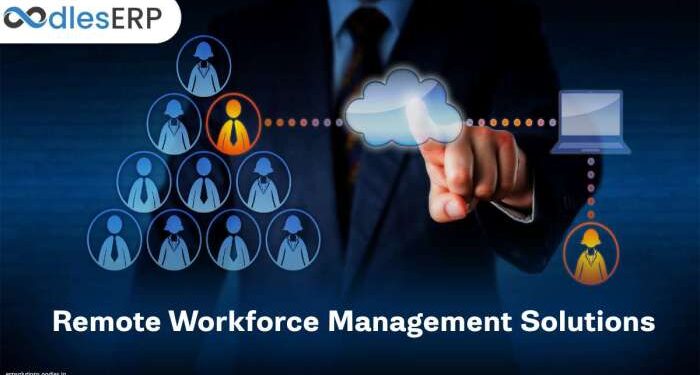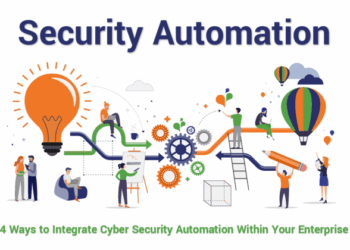In today's fast-paced digital landscape, the demand for advanced remote workforce management solutions has never been higher. Companies are constantly seeking innovative ways to streamline their operations and enhance productivity. Let's delve into the realm of advanced remote workforce management solutions to uncover the key strategies and technologies driving this transformation.
As we explore the concept of advanced remote workforce management solutions, we will unveil the benefits, features, implementation strategies, and security considerations that are crucial for organizations looking to optimize their remote work capabilities.
Overview of Advanced Remote Workforce Management Solutions
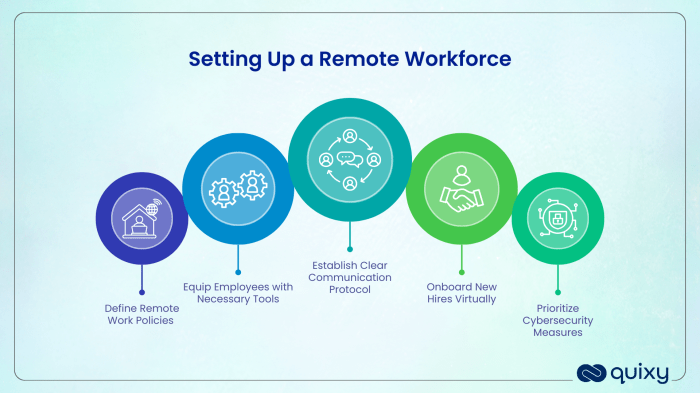
Remote workforce management solutions have evolved over the years to meet the demands of a rapidly changing work landscape. These advanced solutions leverage technology to streamline communication, collaboration, and productivity among remote teams.One of the key technologies used in advanced remote workforce management solutions is cloud-based project management platforms.
These platforms allow teams to access project information from anywhere, collaborate in real-time, and track progress efficiently. Tools like Asana, Trello, and Monday.com are commonly used in remote workforce management.Another technology that plays a crucial role in advanced remote workforce management solutions is virtual communication tools.
Platforms like Zoom, Microsoft Teams, and Slack enable teams to hold virtual meetings, share files, and communicate seamlessly regardless of their physical location.Implementing advanced remote workforce management solutions offers several benefits to organizations. Firstly, it allows for greater flexibility and work-life balance for employees, leading to increased job satisfaction and retention rates.
Secondly, it enables companies to tap into a global talent pool, allowing them to hire the best candidates irrespective of their location. Lastly, these solutions enhance collaboration and productivity among remote teams, ultimately driving business growth and success.
Key Features of Advanced Remote Workforce Management Solutions
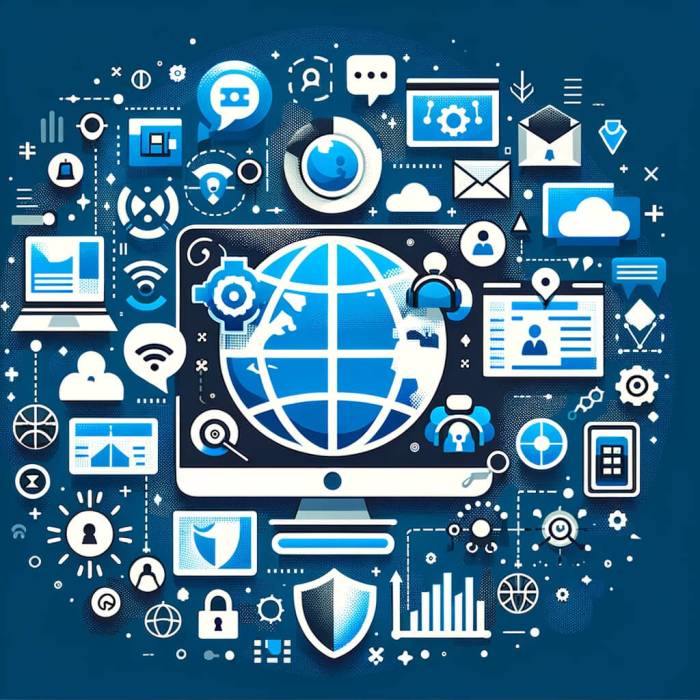
Advanced remote workforce management solutions offer a range of key features that set them apart from traditional systems. These features are designed to enhance efficiency, productivity, and communication in a remote work environment.
Automation in Advanced Remote Workforce Management
Automation is a crucial component of advanced remote workforce management solutions. By automating repetitive tasks such as timesheet tracking, scheduling, and performance evaluations, these solutions help streamline processes and free up time for more strategic initiatives.
Comparison of Features Between Traditional and Advanced Remote Workforce Management Solutions
- Real-time Monitoring: Advanced solutions offer real-time monitoring of employee activities, allowing managers to track progress and address any issues promptly.
- Integration with Collaboration Tools: Advanced solutions integrate seamlessly with popular collaboration tools like Slack, Microsoft Teams, and Zoom, facilitating effective communication among remote teams.
- AI-powered Insights: Advanced solutions leverage artificial intelligence to provide valuable insights into employee performance, trends, and areas for improvement.
- Customizable Dashboards: Advanced solutions offer customizable dashboards that allow managers to view key metrics and KPIs at a glance, enabling data-driven decision-making.
- Employee Self-Service Portals: Advanced solutions include self-service portals that empower employees to manage their schedules, request time off, and access important resources independently.
Implementation Strategies for Advanced Remote Workforce Management Solutions
Implementing advanced remote workforce management solutions requires careful planning and execution to ensure a smooth transition and maximum efficiency. Organizations need to follow specific steps to successfully integrate these solutions into their existing workflows while overcoming any challenges that may arise.
Steps for Successfully Implementing Advanced Remote Workforce Management Solutions
- Conduct a thorough assessment of current workforce management processes and identify areas that can be improved with advanced solutions.
- Set clear goals and objectives for the implementation, ensuring alignment with the overall business strategy.
- Select the right technology and tools that meet the organization's needs and provide the desired features for remote workforce management.
- Provide comprehensive training to employees on how to use the new tools effectively and efficiently.
- Establish clear communication channels to keep employees informed and engaged throughout the implementation process.
- Monitor progress regularly and make adjustments as needed to optimize the use of advanced remote workforce management solutions.
Challenges Organizations May Face When Transitioning to Advanced Solutions
- Resistance to change from employees accustomed to traditional work practices.
- Data security concerns when implementing new technologies for remote workforce management.
- Integration issues with existing systems and processes, leading to disruptions in workflow.
- Lack of technical expertise among employees to effectively utilize advanced solutions.
Best Practices for Integrating Advanced Remote Workforce Management Solutions into Existing Workflows
- Involve employees in the decision-making process and address their concerns to gain buy-in for the new solutions.
- Collaborate with IT professionals to ensure a seamless integration of advanced technologies with existing systems.
- Provide ongoing support and training to employees to enhance their skills and maximize the benefits of remote workforce management solutions.
- Regularly review and update policies and procedures to adapt to changing work environments and technologies.
Security and Compliance Considerations in Advanced Remote Workforce Management Solutions
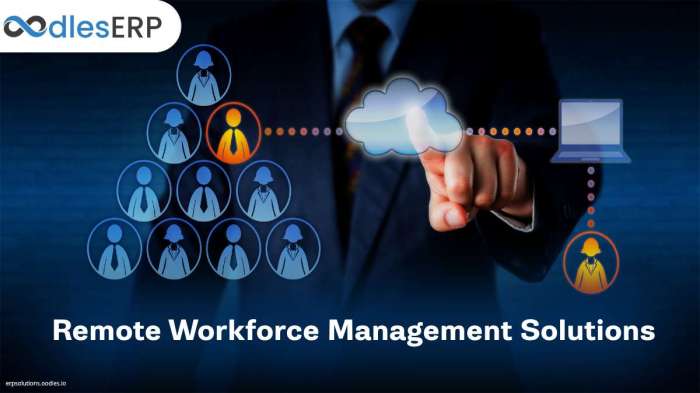
In today's digital landscape, security and compliance are crucial aspects to consider when implementing advanced remote workforce management solutions. Ensuring data protection and meeting industry-specific regulations are paramount for the success of any remote work strategy.
Data Protection Measures
- Implementing end-to-end encryption: Advanced solutions utilize strong encryption protocols to secure data transmission and communications within the remote workforce.
- Multi-factor authentication: Adding an extra layer of security by requiring multiple forms of verification for access to sensitive information.
- Regular security audits: Conducting routine assessments to identify vulnerabilities and address them proactively to protect against potential threats.
Compliance Requirements in Different Industries
- Healthcare industry: Advanced remote workforce management solutions must adhere to HIPAA regulations to ensure the confidentiality and integrity of patient data.
- Financial sector: Compliance with PCI DSS standards is essential to safeguard financial transactions and sensitive customer information.
- Government agencies: Following strict guidelines such as FISMA to protect classified data and ensure secure communication channels.
Role of Encryption in Securing Communications
-
Encryption plays a vital role in securing sensitive data by encoding information in a way that only authorized users can access it.
- End-to-end encryption: Ensuring that data remains encrypted throughout its entire journey, from sender to receiver, to prevent unauthorized access.
- Secure communication channels: Implementing encrypted communication tools to protect against eavesdropping and data interception.
Ultimate Conclusion
As we wrap up our discussion on advanced remote workforce management solutions, it's clear that the future of work is rapidly evolving. By embracing cutting-edge technologies and best practices, organizations can empower their remote teams to thrive in a digital-first world.
Expert Answers
What are some key technologies used in advanced remote workforce management solutions?
Advanced remote workforce management solutions leverage technologies such as AI-powered analytics, remote monitoring tools, and collaboration platforms to enhance productivity and efficiency.
How can organizations successfully implement advanced remote workforce management solutions?
Organizations can ensure successful implementation by conducting thorough training programs, fostering a culture of remote work, and integrating solutions seamlessly into existing workflows.
What security measures are essential for data protection in advanced remote workforce management solutions?
Security measures like end-to-end encryption, multi-factor authentication, and regular security audits are crucial for safeguarding sensitive data in advanced remote workforce management solutions.
